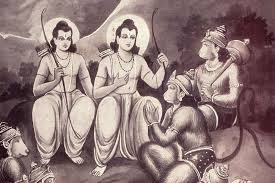The Importance of Well-Wishing Friendship (TCH#10)

Valmiki Ramayan highlights Sugreev and Hanuman Ji's lovely friendship, particularly in Kishkindha Kand. Their friendship depicts a well-meaning friendship in which they were always there for each other, no matter what. The strength of the ring that Shri Ram had given Hanuman Ji, as well as reciting the holy name of Ram, contributed to Hanuman Ji's ability to carry out the enormous job assigned to him. Ram chose him for this role, however, due of his positive attitude , desire to serve , and Sugreev's recommendation . Sugreev became Ram's ally as a result of Hanuman Ji's proposal to Ram. Later, Sugreev repaid Hanuman Ji's debt by recommending him to Ram for the Sita search. This gesture of generosity and selflessness is a true indicator of a perfect relationship between well-wishers, emphasizing the value of friendship in our lives. Valmiki Ramayan emphasizes that true friendship entails helping one another in both good and terrible times. This is emphasized ...





